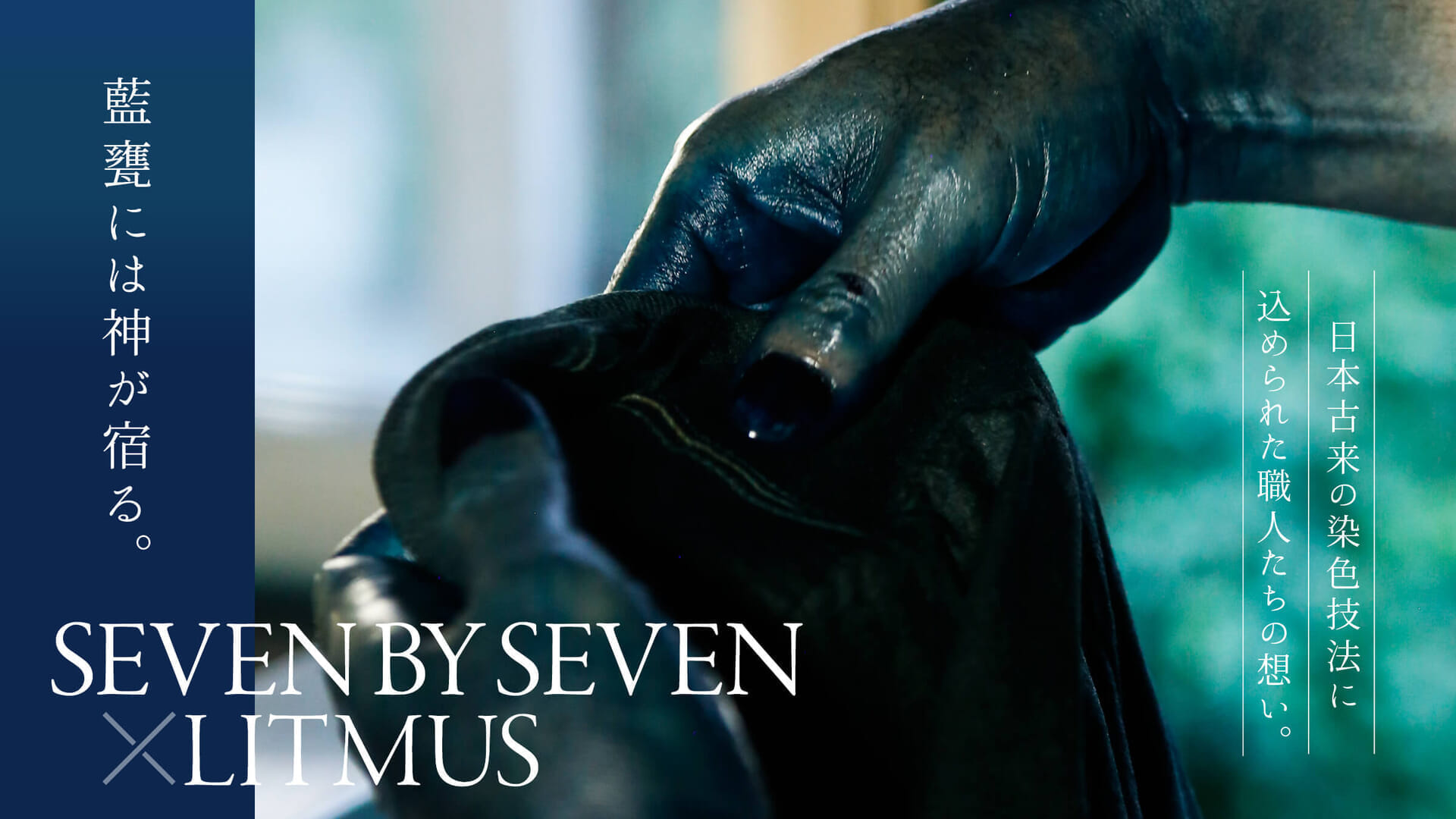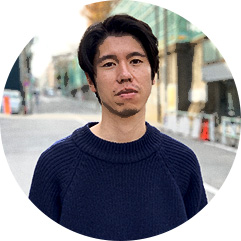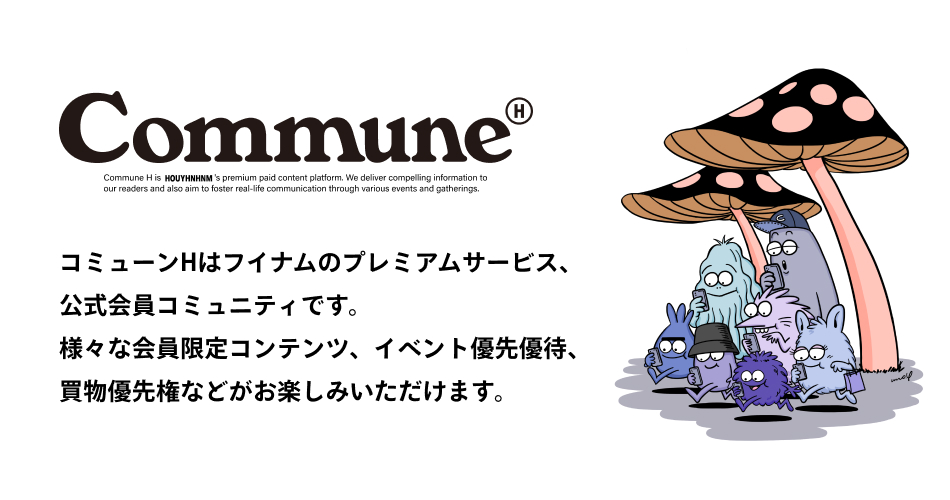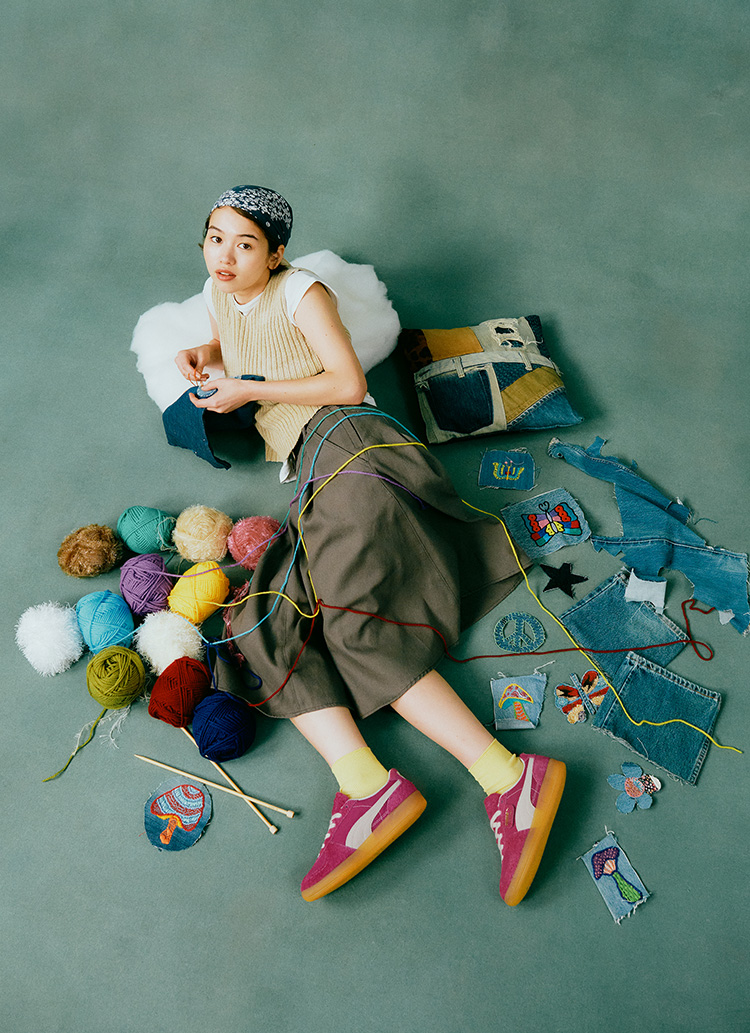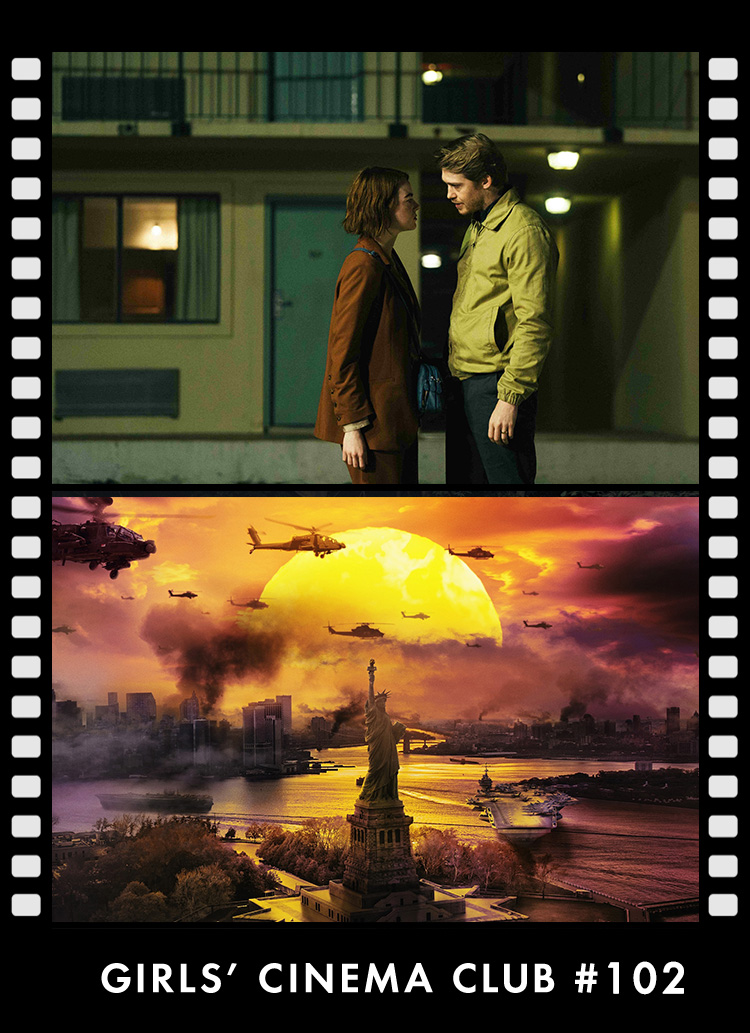They are not just ordinary people , but very cool people.
In Kamakura, Shonan, and Fujisawa, rich nature and people's lives coexist in a well-balanced manner, and a pleasant atmosphere flows through the air. Litmus" is an indigo-dyeing studio based in such a place, working with indigo every day.
The select store "THE LIBRARY" has a lineup of vintage clothes that are individually hand-dyed by "Litmus" craftsmen. The vintage clothing was picked up by Junya Kawakami, designer of "Seven by Seven". He is the one who initiated this project.
Before I started Seven by Seven, I met the two members of Litmus, and I thought they were very cool people. I remember they were wearing indigo-dyed shoes, and their hands were bright blue.

The "two people" Mr. Kawakami refers to are Yuji Matsui and Kazuo Yoshikawa, who started "Litmus. They started this studio in Tokyo in 2000 and moved to Kugenuma in 2004.
I originally had a studio in Setagaya, but it had become too cramped. Indigo dyeing requires drying the dyed clothes in the sun, so I was looking for a sunny place to do it. This place was not only sunny, but the landlord had arranged for a large space for us to hang a lot of clothes to dry. So I moved here and found it easy to live here. I have been living here for 17 years now.
God dwells in the indigo jar.
This time, Mr. Kawakami picked up a made-in-USA button-down shirt by a long-established American brand, a vintage silk shirt, and a wooden gray T-shirt also made in the United States.
When Seven by Seven was in Shibuya, I was able to do an event with them. So we decided to do it again. This time, we set a theme, narrowed down the items, and selected items that we thought would look even better if they were dyed. In their hands, the texture of the clothes is really enhanced.
As Mr. Kawakami says, there is a clear difference in the aura that the clothes give off before and after the dyeing process. The indigo dyeing process by the two members of "Litmus" is entirely done by hand. They do not use any chemical agents, but use the power of nature to express the beautiful indigo color.

What we are doing is indigo dyeing by natural fermentation, which is called 'akuhakkodate,' a dyeing method that does not use chemicals. However, I don't think there is a difference between the two. Nowadays, the use of chemicals is the standard, and we do not criticize it. We are just doing what we think is good.

Fermentation" is the key word in "litmus" indigo dyeing. The raw material is a substance called "sukumo," which is made by piling up dried indigo leaves and fermenting the dye over a period of 3 to 4 months while hitting them with water. The jar contains lye, which is made by dissolving wood ashes in boiling water, into which "sukumo," lime, sake to accelerate fermentation, and wheat bran are added to make indigo solution.


. It takes about 10 days to two weeks for the fermentation to stabilize after the indigo solution is prepared. When you read old literature, it says, 'A god resides in an indigo jar. So they worshipped the jar as a sacred object and held hands with it. I believe that the use of the word "build" for preparing indigo solution is to create a comfortable environment for the microorganisms that control the fermentation process over time. Without fermentation, it is impossible to bring the dye to a state where it can be dyed. That is why I deal with the indigo solution with this sense and feeling.
The indigo solution thus created "has stamina," Mr. Yoshikawa continues.
. "Indigo solution is a fermenting substance, that is, it is a living thing, and if you don't mix the solution once a day, it goes bad, and it is so delicate that even if you dye with the same jar of dye, it will turn out a different color if you dye it in the morning and at night. Once you do that, the amount of dye that can be dyed decreases. In other words, it loses its strength. . But we can't just add more "sukumo" just because the dye has lost its strength. Therefore, we manage the amount and color of dye according to the condition of the liquid. The heavier or harder the material is to dye, the greater the load on the solution, and the less we can dye in a day. Therefore, we decide what items to dye and how much color to dye them by watching the condition of the solution," says Yoshikawa.

At "Litmus," we work with a precise schedule to determine when to build the indigo solution and how to dye the items ordered using the solution that has been built.
. after all, it is this indigo liquid that is at the center. It is really delicate, and during the hot season, the temperature of the liquid rises and fermentation progresses, heading toward decomposition. That's why we try not to dye a lot during these times of the year.


